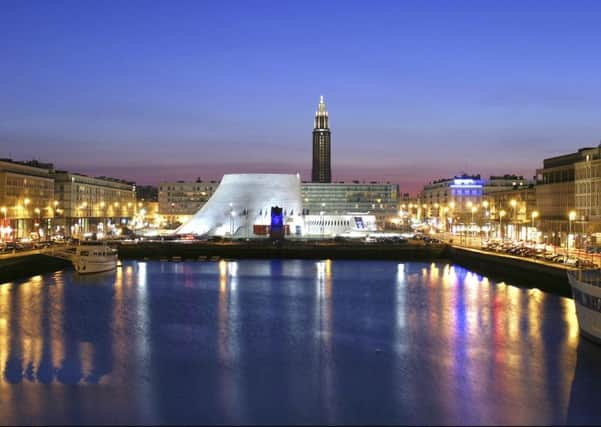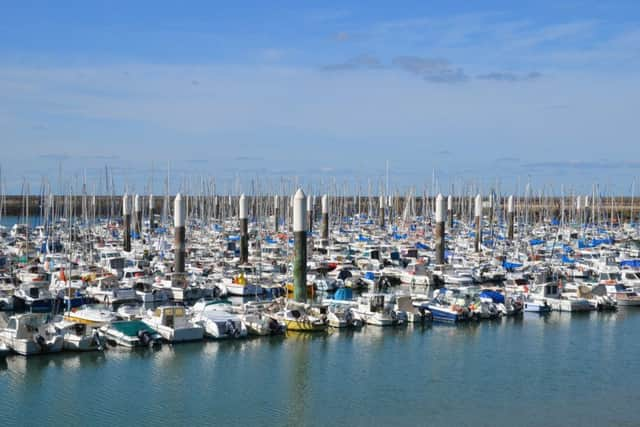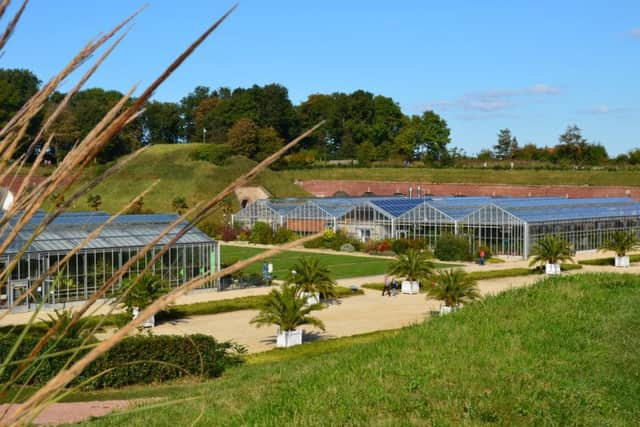Le Havre: A city reborn from the ashes of war now an arts haven


The quaint French city was all but obliterated in the Second World War, with Allied bombs leaving it a hollow shell of its former glory.
But the devastation did lead to an unexpected cultural renaissance in a city which proudly boasts being France’s second-largest port – and one of Europe’s busiest.
Advertisement
Hide AdAdvertisement
Hide AdArchitectural visionary Auguste Perret – the ‘Master of Concrete’, as he is known – was given the daunting task of rebuilding its bombed-out heart, an expansive 130-hectare scar.


Now, as the city marks its 500th birthday, Le Havre is looking to once again reinvent itself as a fresh hub of art, culture and architectural excellence – with Perret’s work taking centre stage.
A relaxing overnight ferry crossing away from Portsmouth, Le Havre is located on the picturesque Normandy coastline, in northern France.
Sadly the city has long been overlooked by visitors seeking out all the treasures France has to offer, with many zipping through it without a second thought.
Advertisement
Hide AdAdvertisement
Hide AdBut with this year’s 500th anniversary celebration now in full swing, the city is going all out to attract people.


And it’s hard to miss its opening gambit – two huge, multi-coloured arches built entirely with commercial shipping containers right by the port.
The impressive sculpture is the creation of artist Vincent Ganivet and is one of a number of quirky art installations injecting fresh life into the city.
It works as a stunning greeting to the city and guides visitors towards Le Havre’s centre near the iconic Bassin du Commerce.
Advertisement
Hide AdAdvertisement
Hide AdThe city itself is relatively accessible, with a handy tram system that can whizz visitors from the dockyard to the beach in a matter of minutes.


And within a few days you will be navigating the tree-lined streets and broad avenues without a problem.
But for those looking to delve deeper in the city’s history, Le Havre’s Tourism Office offers four guided tours – free of charge (English tours take place from 3pm on Saturdays, booking in advance on +33 (0)2 23 74 04 04).
Each of the two-hour adventures covers a different aspect of the city and is part of the Summer in Le Havre experience.
Advertisement
Hide AdAdvertisement
Hide AdBut they can be done just as easily without guides, should people wish to spend a day on each.


Inside the Perret area, visitors can stroll around the section of the city masterminded by the king of liquid stone and rebuilt in the 1950s.
It’s a cityscape like no other – one packed with simplistic uniformity and crisp lines, punctuated by stunning, bold buildings that tower high above the cobbled streets below.
It starts from the white, volcano-shaped theatre Le Volcan – affectionately known as the ‘yoghurt pot’.
Advertisement
Hide AdAdvertisement
Hide AdBuilt by renowned Brazilian architect Oscar Niemeyer, the striking structure sits at the top of the Bassin du Commerce.
The walk takes in key heritage sites, from the impressive city hall – Hôtel de Ville – to the fascinating Maison du Patrimoine which shines a spotlight on the apartments built by Perret.
There is even a chance to visit an authentic show flat (€5pp, six tours daily, in English for booked groups) which will whisk people back in time to the 1950s.
The trail will take in other major art installations, built to mark the anniversary of the city’s foundation, including the stunning sculpture by Sabina Lang and Daniel Baumann – the Swiss-American artist duo better known as Lang & Baumann.
Advertisement
Hide AdAdvertisement
Hide AdBuilt to offer a different design no matter where it is viewed from, it is situated on the pebble-filled beach front of the city’s coast.
The area is the perfect spot to have a picnic or to grab lunch, with beach bars lining the shore and restaurants specialising in seafood a few minutes’ walk away.
For a reasonable price of about €30pp people can enjoy a delicious three-course meal inside Le Grand Large, which offers a stunning seaside view.
The city has a wealth of traditional French cuisine, including the two-Michelin star Jean-Luc Tartarin in the Avenue Foch.
Advertisement
Hide AdAdvertisement
Hide AdAnd around the Bassin du Commerce there is an eclectic mix of international restaurants and bars (including a cracking Belgium Le Trappist).
Other must-see sites include the impressive Saint Joseph Church – the city’s tallest building which is home to one of the temporary art installations – and the MuMa museum of modern arts.
The 1960s glass and steel building features a diverse range of 18th and 19th century masterpieces as well as a new, colourful collection by Pierre Commoy and Gilles Blanchard.
Travel Facts:
Brittany Ferries operates routes from Portsmouth and Poole to Le Havre from £79 each way.
Or visit reservation and comparison site www.AFerry.co.uk
Accommodation at the Hôtel Oscar (doubles from €78 a room) was provided by the Normandy Tourist Board (normandy-tourism.org).